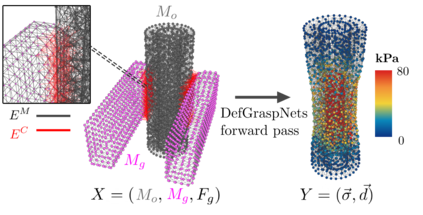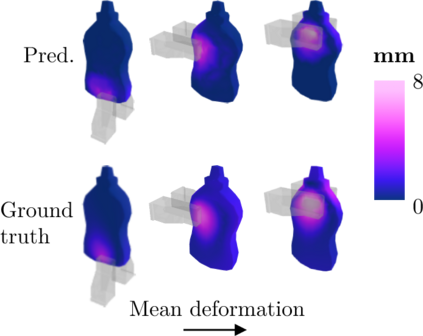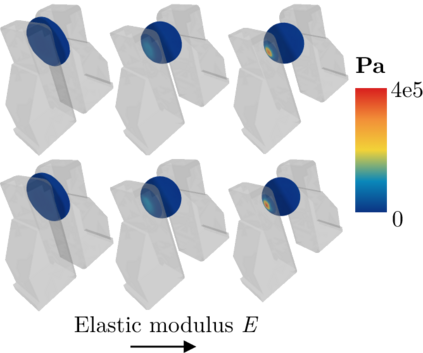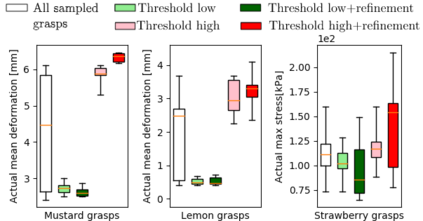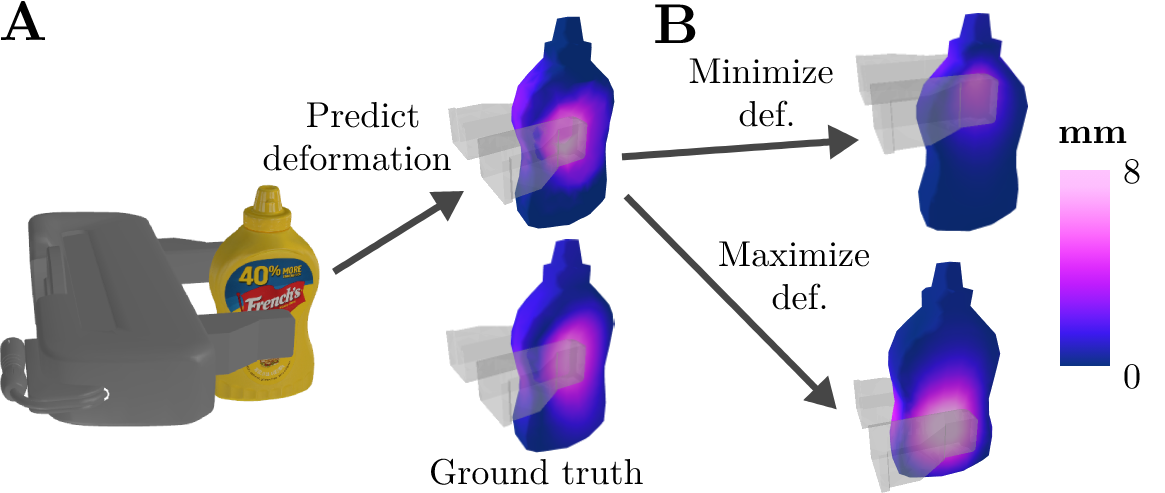Robotic grasping of 3D deformable objects is critical for real-world applications such as food handling and robotic surgery. Unlike rigid and articulated objects, 3D deformable objects have infinite degrees of freedom. Fully defining their state requires 3D deformation and stress fields, which are exceptionally difficult to analytically compute or experimentally measure. Thus, evaluating grasp candidates for grasp planning typically requires accurate, but slow 3D finite element method (FEM) simulation. Sampling-based grasp planning is often impractical, as it requires evaluation of a large number of grasp candidates. Gradient-based grasp planning can be more efficient, but requires a differentiable model to synthesize optimal grasps from initial candidates. Differentiable FEM simulators may fill this role, but are typically no faster than standard FEM. In this work, we propose learning a predictive graph neural network (GNN), DefGraspNets, to act as our differentiable model. We train DefGraspNets to predict 3D stress and deformation fields based on FEM-based grasp simulations. DefGraspNets not only runs up to 1500 times faster than the FEM simulator, but also enables fast gradient-based grasp optimization over 3D stress and deformation metrics. We design DefGraspNets to align with real-world grasp planning practices and demonstrate generalization across multiple test sets, including real-world experiments.
翻译:机器人抓取三维可变形物体对于实际应用(如食品处理和机器人手术)非常关键。与刚性和铰接物体不同,三维可变形物体具有无限的自由度,完整描述其状态需要3D变形和应力场,而又难以准确、快速地计算或测量。因此,评估抓取候选点需要精确但耗时的三维有限元方法(FEM)模拟。基于采样的抓取规划通常不可行,因为需要评估大量的抓取候选点。基于梯度的抓取规划可以更有效,但需要可微分的模型以从初始候选点合成最佳抓取点。可微分的FEM模拟器可以填补这个角色,但通常与标准FEM一样慢。在本文中,我们提出了学习预测性图神经网络(GNN)DefGraspNets,作为我们的可微分模型。我们训练DefGraspNets基于基于FEM的抓取模拟预测三维应力和变形场,不仅运行速度可达FEM模拟器的1500倍,而且还可以快速进行基于梯度的抓取优化,超过3D应力和变形度量。我们设计DefGraspNets以符合实际抓取规划实践,并证明概括了多个测试集,包括实际现场实验。


